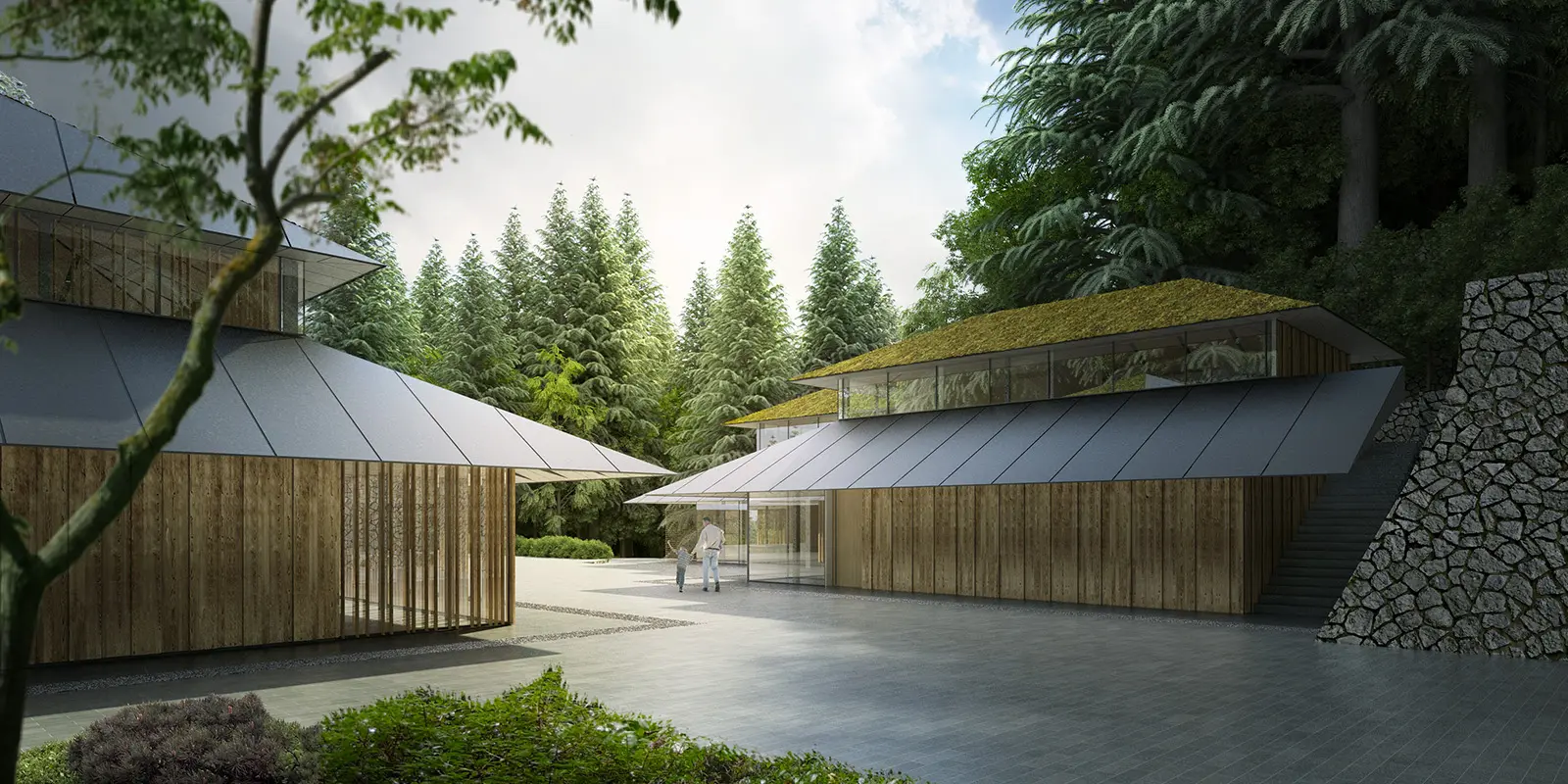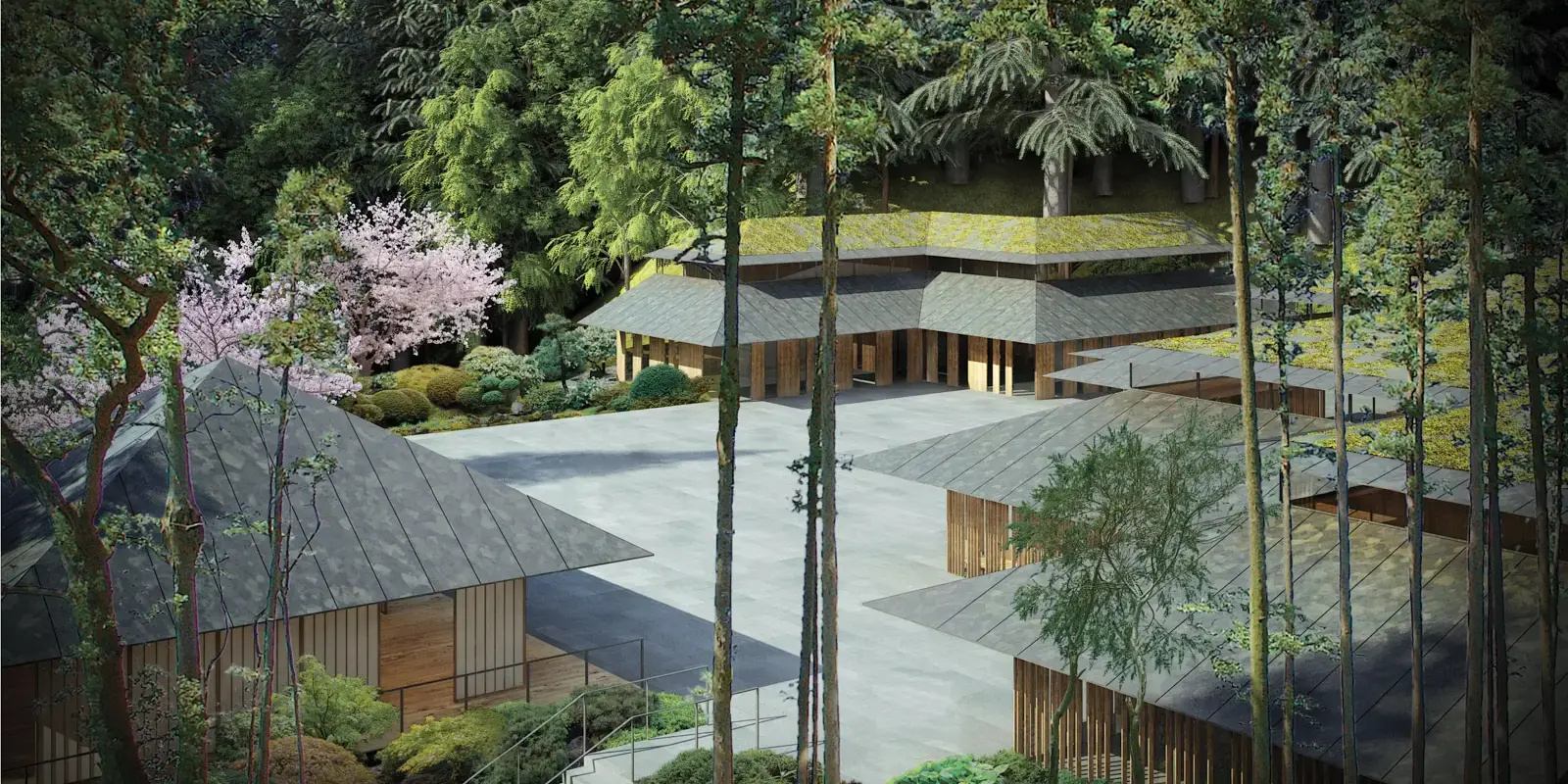April 22 is Earth Day, a time when the importance of environmental responsibility is top of mind. But as an organization that is so deeply tied to nature, every day is Earth Day at Portland Japanese Garden.
Green building practices look deceptively simple. In fact, in the Cultural Crossing project many of the elements added for LEED certification will never be seen by visitors. For example, 24 geothermal wells were added beneath the Cultural Village Plaza. The wells were bored 300 feet down into the earth to take advantage of the moderate temperatures in the ground, boosting energy efficiency and reducing the operational costs of heating and cooling the buildings.
Below the parking lot is another hidden gem – or more specifically a hidden holding tank. To ease pressure put on the City sewer system by rainwater runoff, Garden Curator Sadafumi Uchiyama designed a unique system to channel rain water. A stone creek will be added to run from the top of the hill, all the way down. Dry in the summer, the creek will channel runoff during the rainy season down the hill, connecting the upper and lower Garden areas (members can see a glimpse of where this will go as they take the walking path up to the Garden). Water will go into the hidden holding tank under the parking lot where it will slowly release into the City sewer system. The capacity of that detention system is 3,600 cubic feet, which is 26,930 gallons of water, Uchiyama said.
Other measures in the Cultural Crossing project include:
- Emphasis on Efficiency & Energy Savings
- High efficiency fixtures, such as faucets and toilets, that use less water without sacrificing performance
- High efficiency LED lighting including occupancy and daylight sensor controls
- High performance low-e coated thermal insulated glazing units
- High efficiency water heating equipment
- Low-flow fixtures for hot water savings
- High performance continuous building insulation
- Highly efficient hydronic radiant heating in the Garden House and Village House floors
Facilitating healthier indoor air quality
- Low-emitting, non-toxic green guard carpet
- Low VOC paints, coatings, adhesives & sealants
- Operable windows and walls in all occupied spaces that allow for user-controlled ventilation
- Responsibly sourced building materials
- Emphasis on regionally-sourced materials like the Port Orford Cedar from SW Oregon and Baker Blue granite, from Baker City, Oregon for the medieval Castle Wall
- Using materials with recycled content
- Purchased Forest Stewardship Council (FSC) certified wood for over half of the wood materials included in the project. FSC’s forest management standards expand protection of water quality, prohibit harvest of rare old-growth forest, prevent loss of natural forest cover, and prohibit highly hazardous chemicals
Later this year, the Green elements in Cultural Crossing will be more obvious to the casual observer. Building designs incorporate large sliding window walls that allow access to light and fresh air. Atop each of the buildings in the Cultural Village will be living rooftops made of porous thin ceramic panels. For the past six months our gardeners have been testing native sedums to determine which will work best.
The last step in our construction process will be re-landscaping the site, greener than before. Before construction began, many trees and shrubs from the construction site were carefully removed and taken to an off-site storage area.
Those will all be reintroduced to the new landscape after the new buildings are in place. In addition, hundreds of new plants, shrubs and trees will be incorporated, creating a beautiful, green environment with reduced erosion, better soil health, and improved air quality.
Down the road, the Garden will begin the long-term task of removing the invasive ivy along the walking path. Those who have walked up the path to the Garden need only look around to know this task in particular must be done carefully and gradually to avoid soil erosion and landslides. Eventually the ivy will be replaced with native plants and intentional landscaping.
This Green approach has been the North Star guiding the Cultural Crossing project and will ensure the Garden can be enjoyed by all for generations to come. In the words of Kengo Kuma: Ecologically responsible and environmentally conscious design is very important in our approach. This means that comfortable spaces—with basics such as ample light and natural ventilation—are to be considered on the same level of importance as natural and reused materials and optimum building systems performance. All of this is necessary for the literal and metaphorical growth of the gardens.

